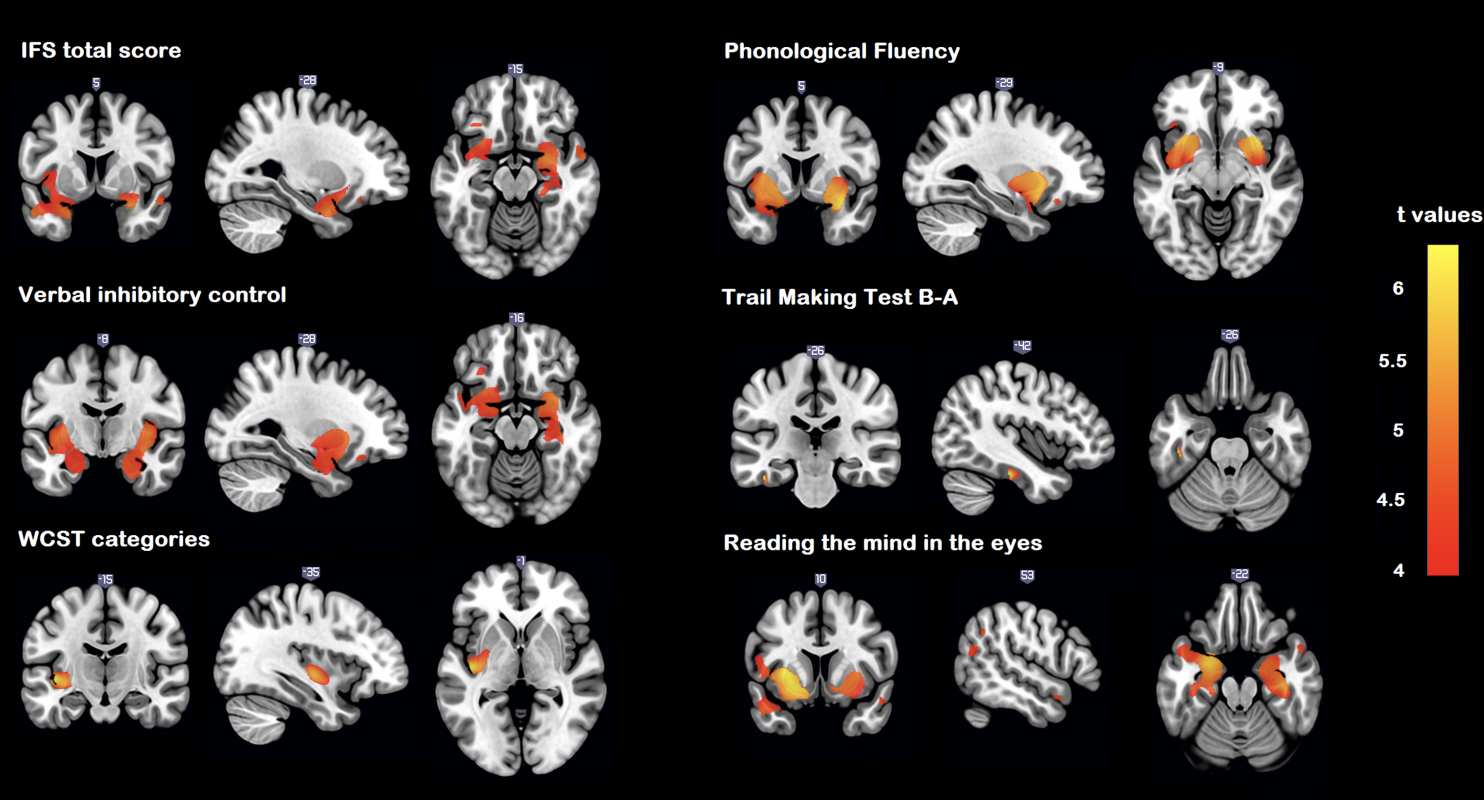Abstract: An early stage of behavioral variant frontotemporal dementia (bvFTD) often displays a mix of behavioral disturbances and personality changes hindering a differential diagnosis from elderly bipolar disorder (BD), making this process a big challenge. However, no studies have compared these pathologies from neuropsychological and neuroanatomical perspectives. The aim of the present study was to compare the executive functions (EF) and social cognition profiles as well as the structural neuroimaging of bvFTD and elderly patients with BD. First, we compared the executive and social cognition performances of 16 bvFTD patients, 13 BD patients and 22 healthy controls. Second, we compared grey matter volumes in both groups of patients and controls using voxel-based morphometry. Lastly, we examined the brain regions where atrophy might be associated with specific impairments in bvFTD and BD patients. Compared to controls, bvFTD patients showed deficits in working memory, abstraction capacity, inhibitory control, cognitive flexibility, verbal fluency and theory of mind (ToM). Patients with BD showed lower performance than controls in terms of abstraction capacity and verbal inhibitory control. In bvFTD patients, atrophy of frontal, temporal and insular cortices was related to EF deficits. Atrophy of the amygdala, the hippocampus, the parahippocampal gyrus, the putamen, the insula, the precuneus, the right temporo-parietal junction and superior temporal pole was associated to ToM impairments. No significant associations between atrophy and EF performance were observed in BD patients. BvFTD patients showed greater EF and ToM deficits than BD patients. Moreover, compared to BD, bvFTD patients exhibited a significant decrease in GM volume in frontal, temporal and parietal regions. Our results provide the first comparison of EF, social cognition and neuroanatomical profiles of bvFTD and elderly BD patients. These findings shed light on differential diagnosis of these disorders and may have important clinical implications.
Keywords: Behavioral variant frontotemporal dementia; Executive functions; Late-life bipolar disorder; Structural neuroimaging; Theory of mind
Keywords: Behavioral variant frontotemporal dementia; Executive functions; Late-life bipolar disorder; Structural neuroimaging; Theory of mind


